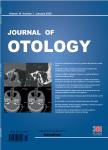Understanding the effects of structured self-assessment in directed,self-regulated simulation-based training of mastoidectomy:A mixed methods study
Understanding the effects of structured self-assessment in directed, self-regulated simulation-based training of mastoidectomy: A mixed methods study作者机构:Department of OtorhinolaryngologydHead&Neck SurgeryRigshospitaletBlegdamsvej 9DK-2100CopenhagenDenmark The Simulation Centre at RigshospitaletCopenhagen Academy for Medical Education and Simulation(CAMES)Centre for HRthe Capital Region of Denmark.RigshospitaletAfsnit 5404Blegdamsvej 9DK-2100CopenhagenDenmark
出 版 物:《Journal of Otology》 (中华耳科学杂志(英文版))
年 卷 期:2020年第15卷第4期
页 面:117-123页
核心收录:
学科分类:0401[教育学-教育学] 04[教育学] 1003[医学-口腔医学] 1002[医学-临床医学] 040107[教育学-成人教育学] 10[医学]
基 金:Visible Ear Simulator Oticon Fonden
主 题:Temporal bone surgery Structured self-assessment Directed Self-regulated learning Virtual reality surgical simulation Technical skills training Simulation-based training
摘 要:Objective:Self-directed training represents a challenge in simulation-based training as low cognitive effort can occur when learners overrate their own level of *** study aims to explore the mechanisms underlying the positive effects of a structured self-assessment intervention during simulation-based training of ***:A prospective,educational cohort study of a novice training program consisting of directed,self-regulated learning with distributed practice(5x3 procedures)in a virtual reality temporal bone *** intervention consisted of structured self-assessment after each procedure using a rating form supported by small ***-structured telephone interviews upon completion of training were conducted with 13 out of 15 *** were analysed using directed content analysis and triangulated with quantitative data on secondary task reaction time for cognitive load estimation and participants’self-assessment ***:Six major themes were identified in the interviews:goal-directed behaviour,use of learning supports for scaffolding of the training,cognitive engagement,motivation from self-assessment,selfassessment bias,and feedback on self-assessment(validation).Participants seemed to self-regulate their learning by forming individual sub-goals and strategies within the overall goal of the *** scaffolded their learning through the available learning ***,structured self-assessment was reported to increase the participants’cognitive engagement,which was further supported by a quantitative increase in cognitive ***:Structured self-assessment in simulation-based surgical training of mastoidectomy seems to promote cognitive engagement and motivation in the learning task and to facilitate self-regulated learning.



